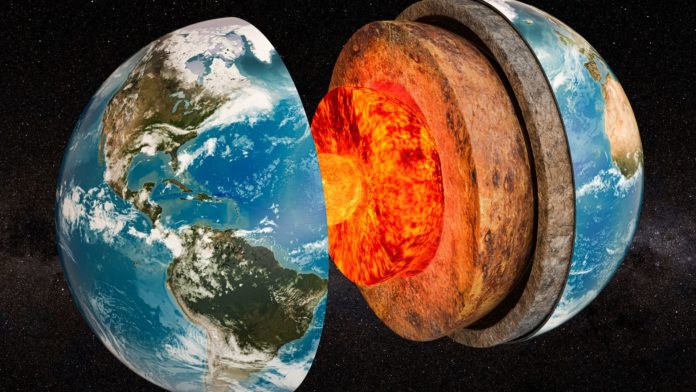Close observations have shown that Earth’s inner core (IC) moves and changes over the decades. The pattern, speed, and driving force of the transition, on the other hand, are still being debated.
Previously accepted models suggested that the Earth’s inner core rotates consistently faster than the planet’s surface. A new study contradicts the previously accepted models, offering evidence that Earth’s inner core oscillates.
By analyzing seismic data, scientists from the University Of Southern California have shown that the inner core changed direction in the six years from 1969-to 74. They also proposed a new model of inner core movement, which explains the variation in the length of the day, which has been shown to oscillate persistently for the past several decades.
The initial study, published in 1996, proposed that the Earth’s inner core rotates at around 1 degree per year faster than the rest of the world, a phenomenon known as super-rotation. The new findings confirmed that the inner core super-rotates at a slower rate.
John Vidale, co-author of the study and Dean’s Professor of Earth Sciences at USC Dornsife College of Letters, Arts, and Sciences said, “From our findings, we can see the Earth’s surface shifts compared to its inner core, as people have asserted for 20 years. However, our latest observations show that the inner core spun slightly slower from 1969-to 71 and then moved the other direction from 1971-to 74. We also note that the length of the day grew and shrank as predicted.”
“The coincidence of those two observations makes oscillation the likely interpretation.”
After analyzing data from the Large Aperture Seismic Array, a U.S. Air Force facility in Montana, scientists found that the inner core rotated slower than previously predicted, approximately 0.1 degrees per year. They analyzed the waves generated from Soviet underground nuclear bomb tests from 1971-to 74 in the Arctic archipelago Novaya Zemlya using a novel beamforming technique developed by Vidale.
Vidale said, “This latest study marked the first time the well-known six-year oscillation had been indicated through direct seismological observation.”
“The idea the inner core oscillates was a model out there, but the community has been split on whether it was viable. We went into this expecting the same rotation direction and rate in the earlier pair of atomic tests, but instead, we saw the opposite. We were quite surprised that it was moving in the other direction.”
Wei Wang, Department of Earth Sciences, University of Southern California, said, “By using seismological data from atomic tests in previous studies, they have been able to pinpoint the exact location and time of the very simple seismic event. However, the Montana Large Aperture Seismic Array closed in 1978, and the era of U.S. underground atomic testing is over; hence we need to rely on comparatively imprecise earthquake data, even with recent advances in instrumentation.”
The study does support the speculation that the inner core oscillates based on variations in the length of day — plus or minus 0.2 seconds over six years — and geomagnetic fields, both of which match the theory in both amplitude and phase.
Vidale said, “The findings provide a compelling theory for many questions posed by the research community.”
“The inner core is not fixed — it’s moving under our feet, and it seems to go back and forth a couple of kilometers every six years. One of the questions we tried to answer is, does the inner core progressively move, or is it mostly locked compared to everything else in the long term? We’re trying to understand how the inner core forms and moves over time — this is an important step in better understanding this process.”
Journal Reference:
- Wei Wang and John E. Vidale. Seismological observation of Earth’s oscillating inner core. DOI: 10.1126/sciadv.abm9916
